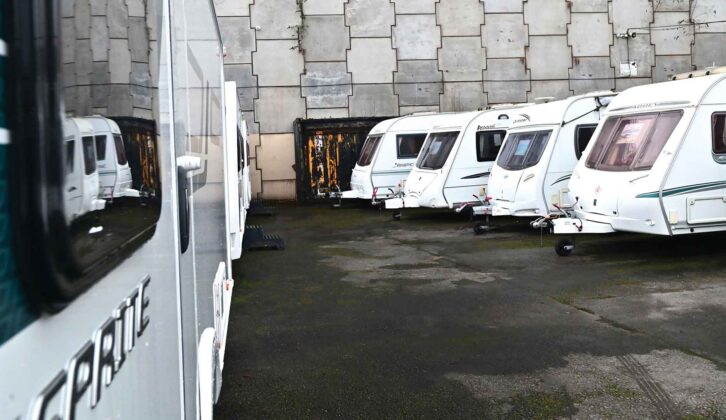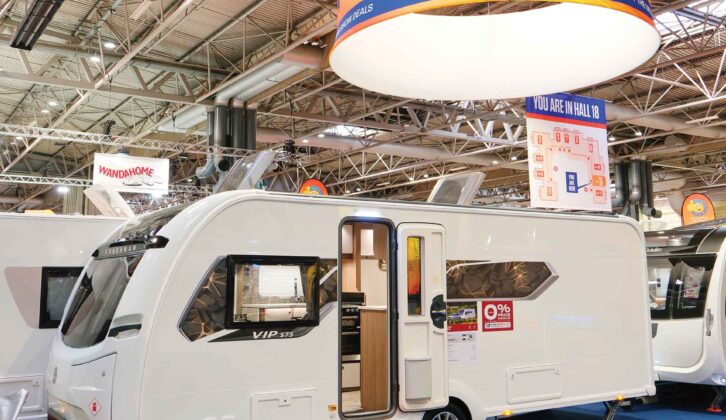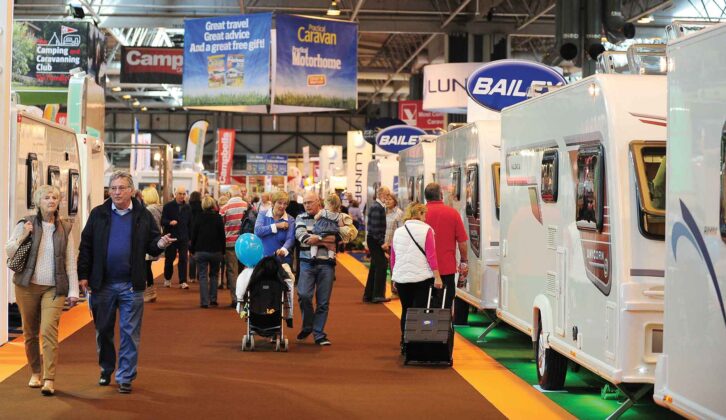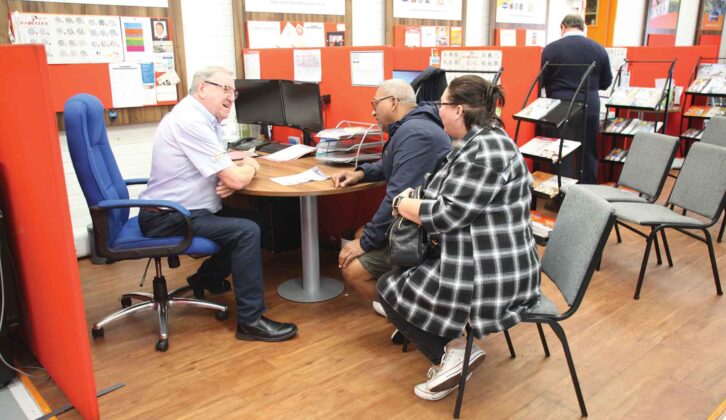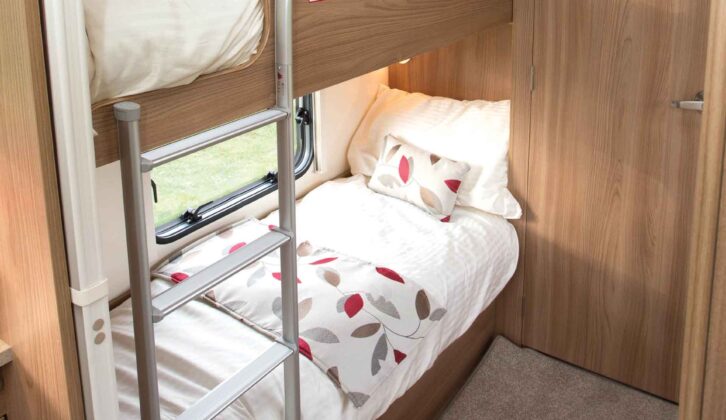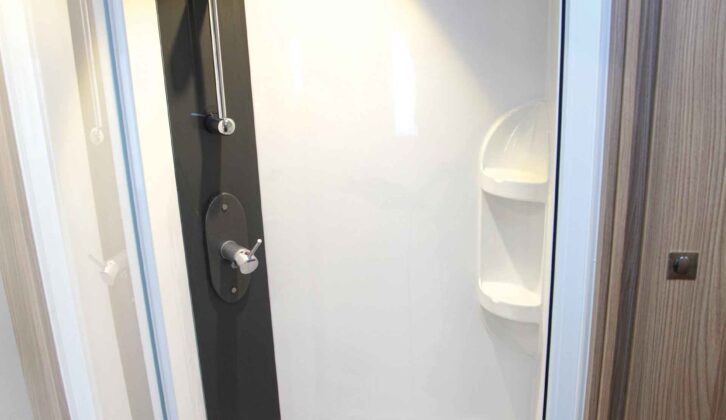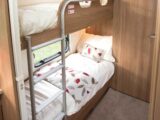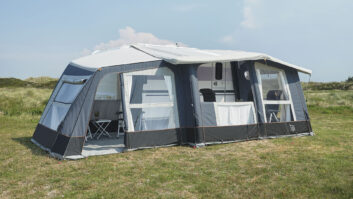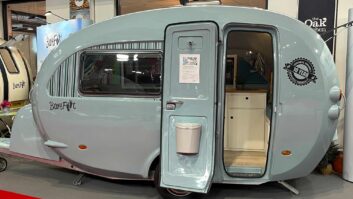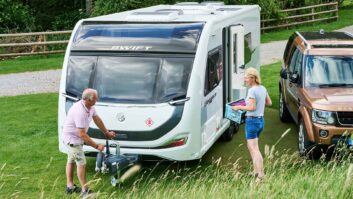Spending time in caravans, carrying out my awards judging at the NEC show, provided me with an interesting insight into caravanners’ buying decisions.
Every so often, a head would pop through the doorway of a lovely, luxury caravan. After glancing around for maybe five seconds, they’d say, “No. The caravan microwave’s too high up!” or “Oh, those curtains are a shocking pattern,” or “There’s no extractor fan.” With that, they’d turn tail and be gone.
I felt sorry for the caravan designers, because it showed just how tough their job is.
As well as the big choices – layout, axles, berths, and the various types of caravan – the designers have to try to meet the detailed requirements of each and every caravanner, the things that make choosing your perfect tourer a challenge.
Selecting the best caravan for your needs can feel a bit like speed-dating, especially at a show – except instead of picking a person, you’re choosing a vehicle that really could make or break your holidays.
But don’t worry, we’re here to help. Let’s explore the most important criteria when you’re choosing your perfect caravan.
How much can you pay?
Ah yes, the big question: how much can you afford to spend? This is at the very core of your caravan-buying journey, because your budget will determine everything about your choice – new or used, luxury or budget caravan, bijou or palace-on-wheels.
If you’re not buying outright, start by listing your monthly incomings and outgoings, take a bit off what’s left over (for a rainy day or interest rate rise), and you’ll have a rough budget for your monthly van payments.
You should now factor in your trade-in van or deposit, which, as a minimum, will typically be 10% of the purchase price.

And beware the temptation of getting carried away in a big, shiny showroom. It’s all too easy to be swept off your feet by a gleaming, top-of-the-line model with all the bells and whistles.
Set a firm budget and more importantly, stick to it. Don’t forget to factor in extra costs, such as a gas bottle, a leisure battery, or even a new tow car if your current one isn’t heavy enough for the job.
If you’re financing a caravan, you’ll also need to keep an eye on interest rates. A variable APR might look manageable now, but can you afford it if the rates rise?
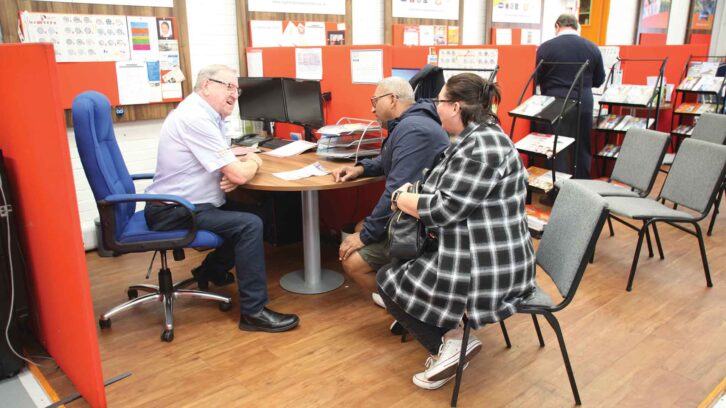
Negotiate sensibly, but don’t waste the dealer’s time – they know when you’re all talk.
If your dream van is right at the very top of your budget, you could look at providing a larger deposit or extending the finance period to make monthly costs more manageable.
However, don’t forget that paying over a longer period will increase the overall cost of the van, sometimes substantially.
The box below outlines a couple of examples. While the seven-year finance deal produces much more affordable monthly payments, you end up paying almost £3000 more interest.
New or used?
With your budget established, the next question is whether you should go for a shiny new van with a long warranty, or bag a bargain by buying a secondhand caravan that might have a higher spec.
A used caravan can offer great value – you might track down a top-spec, three-year-old model for the price of a new mid-range van. Check for water ingress and ensure that the seller has kept up with the required maintenance.
New caravans come with warranties and that ‘fresh van’ smell, but they can stretch the budget. Consider looking for end-of-year models at dealers; they’re brand new but often heavily discounted to make way for next year’s stock.
Caravan towing weights
Here comes the maths. Towing weights really can make or break your caravanning experience. Although rules for the licence for towing a caravan have relaxed, it’s still important to get the numbers right and make sure you’re aware of the various caravan weights.
The key figure here is the MTPLM (Maximum Technically Permissible Laden Mass). That’s the heaviest your caravan can be when loaded up with all your essentials, such as your awning, clothes, food and so on. This also includes your leisure battery and additions such as motor movers or air-con units.

Compare this to your car’s kerbweight, usually found on a sticker in the driver’s door jamb. For beginners to caravanning, stick to the 85% guideline: your caravan should weigh no more than 85% of your car’s kerbweight. Once you’ve gained experience, you can technically tow up to 100%.
For example, if your MTPLM is 1300kg, your car should weigh at least 1530kg for the 85% guideline. Experienced tow car drivers could use a 1300kg vehicle. Also, check your car’s maximum towing weight before you start your buying journey.
Dealer or private sale?
Buying privately can save money, but it comes with risks. There’s no warranty and you will need to do your homework to avoid landing yourself with a lemon. Check for signs of water ingress, mismatched VIN numbers and evidence of neglect. In addition, inspect all of the paperwork and the servicing records.
You can find a used bargain this way, but you just have to be a little bit more careful, for example, ensuring you view the van at the vendor’s home.

Dealerships may charge you more, but they offer peace of mind. A reputable dealer will provide a warranty, pre-delivery inspection and a chance to test everything works as it should. If you’re new to caravanning, the extra cost could be worth it for the reassurance alone.
It’s very important to beware online selling scams. If a caravan (or tow car) deal looks too good to be true… it is. Often, these scams reveal that the vehicle is out of the country and will be delivered as soon as you’ve paid. They are very tempting, detailed and plausible. Steer well clear!
Caravan size
How big does your caravan need to be? Are you a solo adventurer, a sociable couple, or a family of five with a big dog that thinks it owns the place?
The size and berths that you choose will depend largely on who’ll be joining you, but don’t underestimate the value of having extra internal space, especially if you tour in the UK, where you’re likely to be inside the van more than you would be on Continental holidays.

Many caravanners prefer the extra space seen in the best 8ft-wide caravans. These are amazing and not really any harder to tow than a regular van. However, you might need
a bigger tow car – and remember to check the eight-footer will fit on your driveway!
Bigger (twin-axle) caravans could mean higher pitch fees, slightly trickier manoeuvring and higher servicing costs.
Caravan layout
Choosing the right layout is crucial. For many buyers, it can take one or two van purchases to really nail down which floorplan is perfect for them.
Fixed beds are really great for convenience, but make-up beds offer flexibility, and more room in the van for other attributes.
Do you enjoy cooking on tour, and require extra worktop for preparing gourmet meals, or are you more of a beans-on-toast person when you’re away?
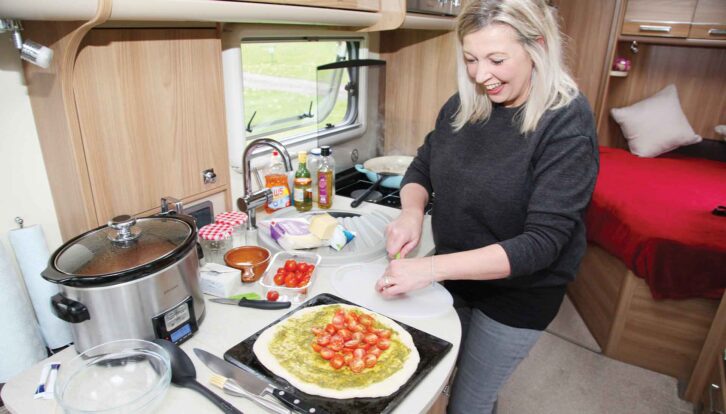
How big are the washroom and the shower cubicle, and whereabouts are they in the tourer? Would you be happy with a compact, combination washroom/toilet for occasional use, and relying on the campsite facilities for your daily ablutions?
Families might prioritise a layout that includes bunk beds, or a separate lounge area for the children’s use.
Finally, don’t underestimate the importance of aisle space, which increases convenience and safety, especially when cooking. Remember, caravan layouts aren’t just for comfort; they shape your entire caravanning experience.
Caravan specification
Many modern caravans come fitted with a plethora of gadgets. But think about what you really need, as opposed to what looks good on paper.
Heating is essential, but do you prefer blown-air systems or Alde radiators? What about the caravan fridge and freezer capacity?
If you’re a fan of winter caravanning, consider features such as better insulation, solar panels (see: how to install solar panels on a caravan) or even underfloor heating.

Some add-ons, such as motor movers or auto-levelling, are lifesavers for those who prefer less manual effort, especially as they get older.
And if you’re into tech, there are even app-controlled systems to adjust the heating and lighting remotely from your phone.
Likewise, mobile internet can help you stay in touch with the family, keep children occupied when you are busy, or allow you to work while you’re on tour.
Caravan storage
Storage is a bigger deal than you might think. Those cupboards, lockers and wardrobes could seem like afterthoughts, until you’re trying to cram in clothes, food and kit for a fortnight, not forgetting that you need to know how to load a caravan safely too.
If you’re planning longer trips, you’ll want a sizeable wardrobe. Outdoor enthusiasts should look for wet lockers for their gear.
Fixed beds often have loads of storage underneath, but be wary of overloading this area with heavy accessories, as it can affect the balance when towing.
Make sure your caravan has somewhere to stash your caravan essentials such as the spare wheel, power cable and steady winder. Front gas lockers are handy, but not all vans have them, so plan ahead.
Warranty, service history
A caravan might look shiny and new on the outside, but what’s lurking beneath the surface?
Always check the van’s service history. Regular caravan servicing is vital for spotting potential problems, especially leaks and damp.
If you’re buying used, make sure the paperwork matches the caravan’s condition. CRiS checks are a must to confirm ownership and avoid buying a stolen van.
When you are buying from a dealership, clarify the warranty terms. It’s worth staying nearby for a night or two after purchase, so any niggles can be quickly resolved before you head home.
Condition
Finally, give the caravan a good once-over. Tyres older than five years should be replaced, and gas pipes must be in good condition. Ask the dealer how old both are. Check moving parts, such as the handbrake, steadies and hitch.
Inside the van, examine the upholstery, the woodwork and kitchen surfaces. A spotless hob and sink suggest the previous owner rarely cooked, which could be a bonus for you.
The verdict on choosing the right caravan
Choosing the right caravan is a balancing act. Your priorities, be it size, layout or budget, will shape your decision. Remember that as with most things, there is a compromise to be made.
A spacious van will weigh more, and a van with a roomy lounge might have a smaller washroom. Your preferences might also evolve as you spend more time caravanning, or your family dynamic evolves.
Many start with a used van to learn what works for them, before upgrading later.
Take your time, visit dealers and seek advice from the staff. Whether you go for a British or a European brand, the perfect van is out there waiting for you!
After buying your tourer, one thing you’re likely to need to know is how to level a caravan – it allows the fridge and drainage system to work properly.
Future Publishing Limited, the publisher of Practical Caravan, provides the information in this article in good faith and makes no representation as to its completeness or accuracy. The material contained in this article should be used for informational purposes only and in no way should be relied upon as a substitute for independent buying advice. You should not act or refrain from acting based on any information provided in this feature and should consult with your own advisor regarding any questions you may have in relation to the matters discussed in this article. To the fullest extent permitted by law, neither Future nor its employees or agents shall have any liability in connection with the use of this information. You should check any warranty is not affected before proceeding with technical work.
If you’ve enjoyed reading this article, why not get the latest news, reviews and features delivered direct to your door or inbox every month. Take advantage of our brilliant Practical Caravan magazine SUBSCRIBERS’ OFFER and SIGN UP TO OUR NEWSLETTER for regular weekly updates on all things caravan related.
